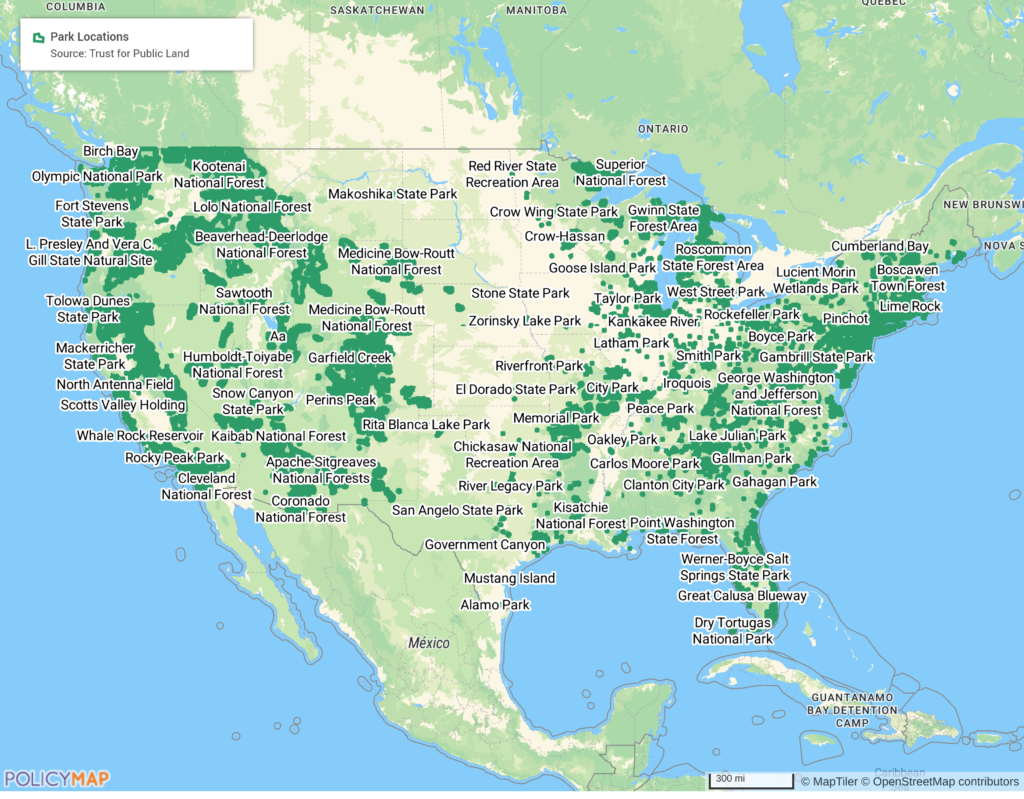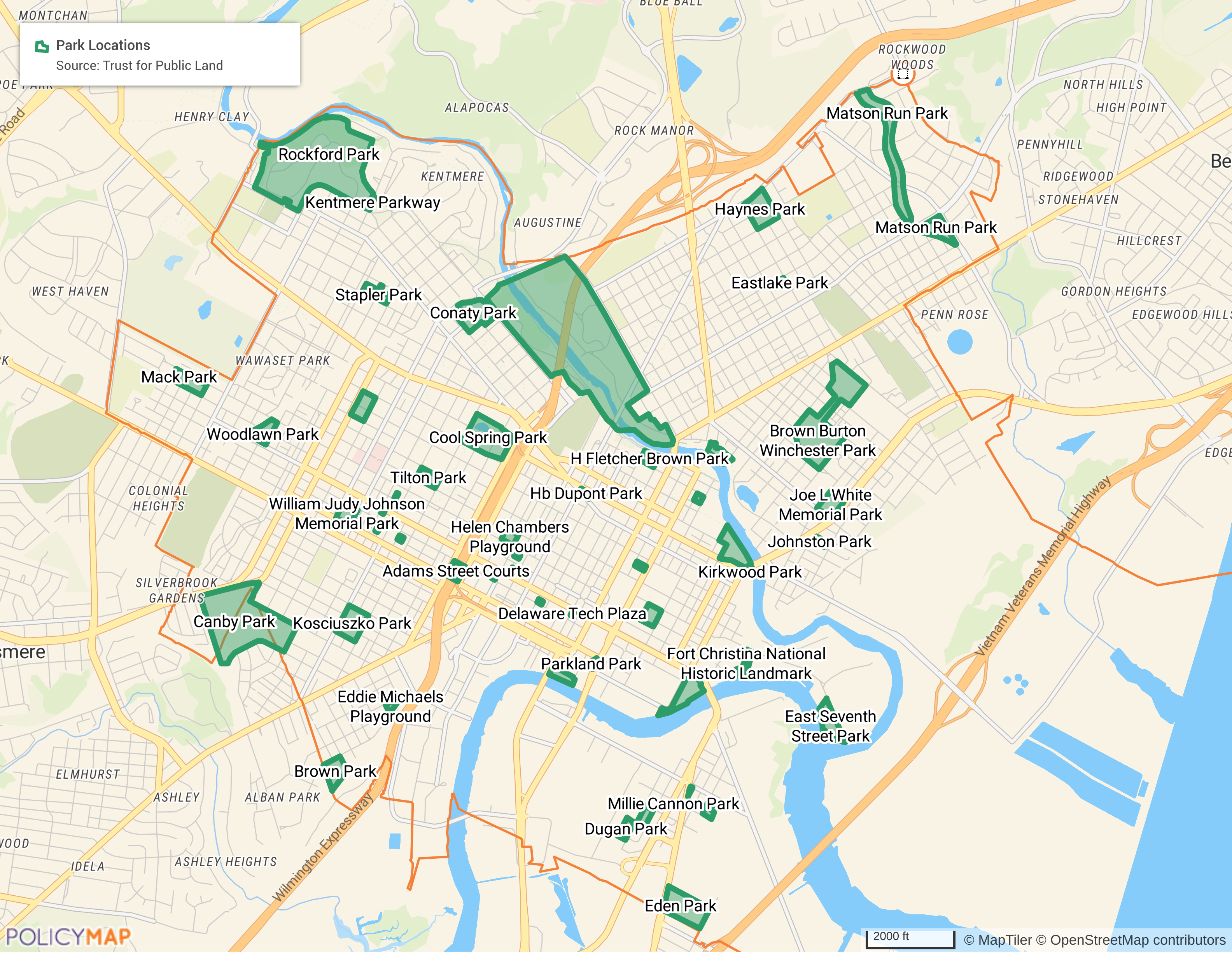Why Are Parks Important?

Data
Park Locations and Park Priority Areas
Source
The Trust for Public Land (TPL)
Find on PolicyMap
- Quality of Life
- Parks
Data Shows Green Spaces Are Good For Your Community
Whether for exercise, play, social distancing with friends, or simply escaping the confinement of the home, local parks have been vital during the COVID-19 pandemic. Even before the pandemic, parks served an essential purpose in our communities, health, and ecosystems. Park Locations and Park Priority Areas from The Trust for Public Land (TPL), now available to all PolicyMap users, show the areas in most need of parks, the demographics of households near parks, including income physical activity and mental health levels, and environmental conditions including urban heat and air pollution. The ParksServe database is complete for all cities and towns in the US that overlap an urban area. Areas outside these boundaries do not contain data on parks, park priority areas, or 10-minute walk demographics.
Map of Parks in US:

Parks Provide Community Benefits
Urban parks allow people to engage with their communities on a more personal level, providing space for individuals to socialize and connect. Parks offer the perfect place for children to play with other children, neighbors to meet each other, play pick-up basketball games, in addition to multitudes of other activities. By serving as a centralized location for neighborhoods, local parks are the ultimate community space. The map below shows the thousands of people served by the centralized parks in Wilmington, DE.
Map of Park Locations in Wilmington, DE

Health Benefits of Green Spaces
Parks, playgrounds, greenways, trails, and community open spaces keep residents healthy, both mentally and physically. More and more, we see research that links contact with the natural world and better physicological health. One study showed that spending even a short amount of time in a park can significantly reduce stress.
The map below shows Park Priority Areas, or places in need of parks, in Pittsburgh overlayed with the estimated percent of adults reporting poor mental health in the past 30 days. Several areas in Pittsburgh could benefit from additional parks geared towards the improvement of the residents’ mental health. The darkest purple areas show where the highest percentage of adults with poor mental health are located.

Similarly, green spaces help build the health of communities and their residents by providing opportunities for physical activity. Research shows that individuals who live closer to a park frequent it more than those who live further away. Proximity to a park reduces the barrier to a consistent exercise routine. In addition, accessing local parks costs much less than a fitness center or sports league membership.
Lack of opportunity for exercise can ultimately lead to obesity. We can see in the map of Dallas, TX below high rates of obesity and areas in need of parks filtered by low physical activity and low overall health.

Identifying Parks and Areas in Need of Parks
TPL publishes data that shows the unique relationships between park locations, or lack thereof, community resources, and overall demographics. With the individual indicators from TPL in combination with data on PolicyMap, users can begin to identify parks and the underlying conditions surrounding them to understand which areas are directly or indirectly benefitting from parks.
About the Data:
This post only highlights a few filters and uses for the two datasets. For Park Locations, TPL identifies access, owners, designation, size, percent of children, adults, and elderly, along with divisions of household income. For Park Priority Areas, TPL identifies areas based on need, overall health, including mental health and physical activity, land surface temperatures, low-income households, and people of color, along with other environmental filters. Users can filter for all these options on PolicyMap. For more information about this dataset: https://www.tpl.org/parkscore/about.